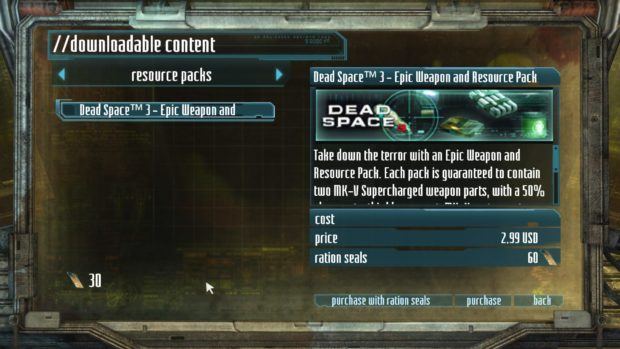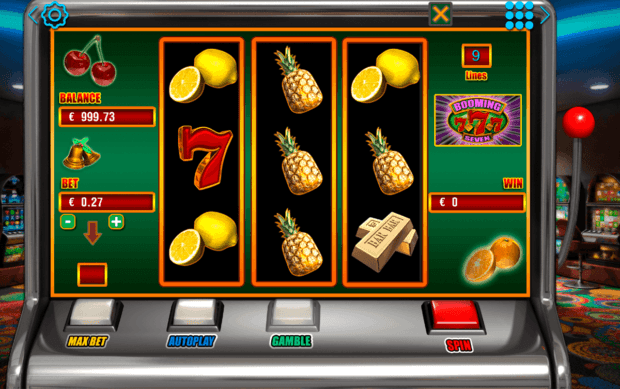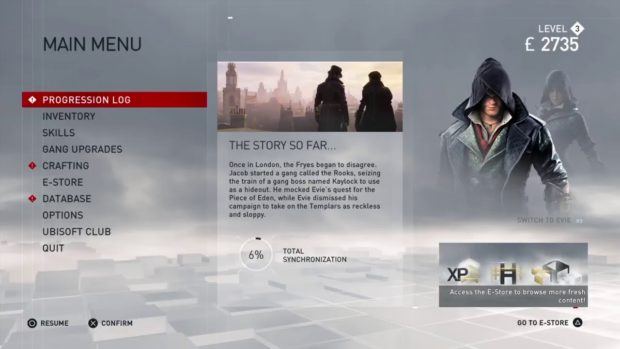While microtransactions are a business tactic that have been around for quite a while, with the release of Warner Bros. Interactive’s Middle Earth: Shadow of War looming in the horizon, the implementation of microtransaction in games has again been brought to the forefront of industry analysis and discussions.
Popularized in the games industry as way of providing sustainability and income generation in free-to-play model, microtransactions quickly became a staple of such games and is still frequently employed in free-to-download mobile-games, as well as games on Facebook-like social media platforms.
Slowly Activision, EA, Ubisoft, Microsoft and other publishers creeped this strategy into multiplayer games by adding microtransactions in established franchises like the Fortzas, Call of Duties and Sports titles, which then caused this strategy to spread to newer games, with the trend continuing even in recent games like Rainbow Six Siege, Titanfall 2, Destiny 2 and Overwatch.
As long as the content being purchased by players did not affect the actual gameplay element and stayed clear of the practice of pay-to-win, these credits, loot boxes, supply drops and premium currencies used to purchase costumes and weapon skins, were considered harmless cosmetic buys that did not upset the multiplayer balance of the game, and much less annoying than the Season-Passes.
Just when the game industry was reeling from the effects of Season-Pass culture, just when gamers thought nothing could be worse than crucial content hidden behind Pre-order “Bonus” pay-wall, in came the dirtiest players in the game; the Single Player Microtransactions.
While annoying in their multiplayer incarnations, at least these practices were kept on a leash to keep the competitive balance and prevent pay-to-win scenarios, in singleplayer focused games however, these considerations seemed moot, and the practice of microtransaction became infinitely more egregious.
And despite their negative effects, microtransactions have been making inroads to the singleplayer experiences since the twilight of the last console generation; many high-profile publishers have contaminated their high-profile game franchises that include Dead Space 3, Metal Gear Solid V: Phantom Pain, Assassin’s Creed Syndicate, Deus-Ex: Mankind Divided and of course, the upcoming Middle Earth: Shadow of Mordor.
No matter how amazing the story is, how innovative its game-mechanics are, how well-structured its level-design is, how polished its environments look and how extravagant its production values are, the presence of these microtransaction strategies not only devalue its items and upgrade system, they adversely affect the game design and are inherently exploitative and abhorrent tactics; worst of which are the inclusion of randomized loot-boxes.

Neo-Gambling:
Loot systems, whether in shape of loot-boxes, card-packs, treasure-chests or crates, are an inherently exploitative mechanic included in games for the specific purpose of continuously enticing players to spend money on a randomized untold quality of reward.
This is a disturbing new trend in gaming that has taken over big games and small, has superseded the publisher culture of aggressively marketing season-passes and pre-order shenanigans, and has now become the go-to method of incorporating microtransactions in video game experiences.
Giving players the ability to pay to unlock random reward crates is not a system made to increase player choice, it is actually a thinly veiled way to tug at the addictive side of human brain to entice it to pay for more.

Even though purchasing a random crate or a box mostly results in players not get anything worthwhile in return, they still keep on paying for more, on the off chance that they might get lucky and get something good once in a while. Why are players so enamored by such an apparently bad deal, to gravitate towards it again and again?
This is because these randomized loot microtransactions are essentially digital slot machines; they are an inherently predatory business tactic that utilize the exact same concepts as gambling games and exploit human psychology to incentivize repeat payments on the promise of chance.
With it, players basically pay to have a chance at something, where most of the time, even paying up doesn’t net the player the item they were interested in. It creates the illusion of ‘Haves’ and ‘Have-Nots’ and preys on those with psychological susceptibility to fall in gambling spiral (termed as “whales” by the industry) to repeatedly pay to gain an imaginary reward.

Devaluing Items and Upgrades:
Aside from the exploitative pay to gain system, say you are unconcerned about the morality behind dubious practices involved in sneaking gambling strategy and tactics into video game entertainment, and are only interested in how the game plays rather than how it is marketed; why should you then be concerned about microtransactions?
Whether it is spending money on purchasable upgrades or opening lootboxes that contain purely cosmetic items, inclusion of microtransactions almost always goes to devalue gameplay progression and undermine the importance of items and upgrades present in the game.
Microtransactions that allow players to straight up purchase better equipment and stat boosts are essentially pay-to-win schemes where one is paying to bypass the game’s progression and mechanics. Not only do such options totally undervalue the whole progression system, it also undermines the fact that the gameplay is worth the time and thus diminishes the game’s value as a whole.

While microtransactions that are catered towards directly purchasing purely cosmetic items do not create the same game-changing results, they do however result in a different form of devaluation of gameplay when done in shape of the randomized lootboxes.
The advent of lootboxes usually results in hundreds of items; mostly variants that are differentiated only by a very slight change to colors or stats assigned to them. This aspect of randomized loot makes these items infinitely less special. The fact that these items are similar, they aren’t earned and lack any worthwhile context and lore, makes them less emotionally valuable for the player.
An additional slimy strategy employed by publishers for such microtransactions is that this loot is not just single items or costumes, but it is armors and weapons presented in form of sets. This is essentially a two-pronged attack on the player’s psyche, trying to exploit the collector and completionist tendencies of a gamer in addition to the gambling spiral discussed before.
Firstly, these gear sets usually include separate items for head, torso, arms and legs, each with their own stats but equipping all together gives players bonus stats, thus targeting the players that love to min-max their character stats.
Second target for this system are those that care more about the visual aesthetics. So even if the player is unconcerned about minor stat boosts, these items are designed in such a way that they visually clash with items from other gear-sets and look unappealing when worn/ equipped with random items or armors; incentivizing players to remain unsatisfied and buy more.

Constriction of Game Design:
Now, say you are not worried about min-maxing character stats, you are unconcerned with how your character looks, that these predatory tactics do not affect you and you will never even touch the micro-transaction component of the game; why then should the presence of micro-transactions in a single-player game concern you?
Isn’t it enough that the publisher and developer have teamed up to specifically alleviate the concerns of potential players by explaining that these micro-transactions are completely optional and that most, if not all, of the purchasable items can still be earned through in-game play?
Let’s ignore the fact that most of the time this statement isn’t even true, and that presence of a separate premium currency, that is usually required for premium/legendary gear, is always purposefully limited in the amount that can actually be earned from in-game efforts; there are still more ways that inclusion of micro-transactions negatively impacts aspects of the gameplay experience.

At the very basic level, microtransactions are always forth-walling breaking and intrusive to the player experience, as their inclusion also comes hand-in-hand with the issue of immersion breaking prompts to advertise and shill the ever-present option of using real-world money to acquire something within the game.
Aside from these prompts, inclusion of microtransactions also necessitates gameplay to be structured in a way so as to entice players to lean towards opting for the buying the “optional” lootboxes. Developers start using the free-to-play tactic of making the core-gameplay additionally grindy; making drop-rates for good loot extremely low, creating an intangible and invisible paywall that makes playing a chore, requiring players to do the same thing again and again and exhaust them into purchasing the microtransaction options.
Furthermore, addition of microtransactions and random lootboxes also makes gameplay progression and level design mundane. Due to reliance on randomized loot, majority of the game design cannot rely on player having the item and thus the impact of the item on long-term gameplay and level progression is minimized.
This results in devaluation of core-gameplay, homogenized level designs, disjointed flow and uninspired game mechanics; creating a dull free-to-play game out of amazingly developed full priced AAA games.

Poor Excuse of Profitability:
And let’s be fair here, these tactics and strategies are not done with creative intent by the developers like Eidos, Visceral, Kojima Productions and Monolith, but mostly come as a result of a mandate from publishers like Square Enix, EA, Konami and Warner Bros. Interactive. A mandate that ruins otherwise amazing games made with genuine effort and copious creativity of their developers.
The reason behind this mandate is not for the betterment of games, or the often-used excuse of, allowing unseasoned or busy gamers with choice of quickly accessing gameplay elements; it is usually a product of pure capitalistic greed and need for lining pockets long after the initial sale.
Now, the assumption of making money off a video game product is not an immoral or controversial idea. Video game industry is not a charity case and the publishers are liable to bring profits to their shareholders, just like the developers are liable to provide their employees with reasonable pay.
However, profitability is not a good enough excuse to partake in business practices that are borderline predatory and immorally anti-quality.

Even though the industry image, exposure and sales numbers are on a constant steady growth, maybe the publishers are right in asserting that the production values required for HD/4K visuals and the demands of making AAA games makes such demands on resources that it results in shrinking profit margins due to the current standard of $60 game price.
However, it is important to remember that just like the oft-derided practice of region-locking hardware and software, the $60 price point is an industry standard that was instituted by these same publishers, not for some altruistic consumer centric approach, but simply to appease the retailers to benefit their own post-production marketing strategies.
Instead of partaking in exploitative tactics that not only prey on people’s impulsive traits and harm the gameplay experience, the video game publishers can divert their marketing might from influencing consumers to partake in micro-transactions, to convincing consumers of the benefit of moving back to the non-uniform pricing that was prevalent in pre-PS3/360 era.
The high production AAA games used to be priced way more than $60 and less expansive games used to cost much less. This was prevalent as early as the PS2 and GameCube days, as well as in N64 and PS1 era, and even during the heydays of SNES, Genesis, NES and the generations before.
However, it is also incumbent upon us as consumers to hold these publishers accountable by showing some restraint and giving some burgeoning quality $30 to $40 AA games a chance, instead of continuously falling into the current publisher trap of toxic AAA quicksand filled with Season-Passes, Day-One DLCs, Pre-Order Bonuses and Microtransactions.
